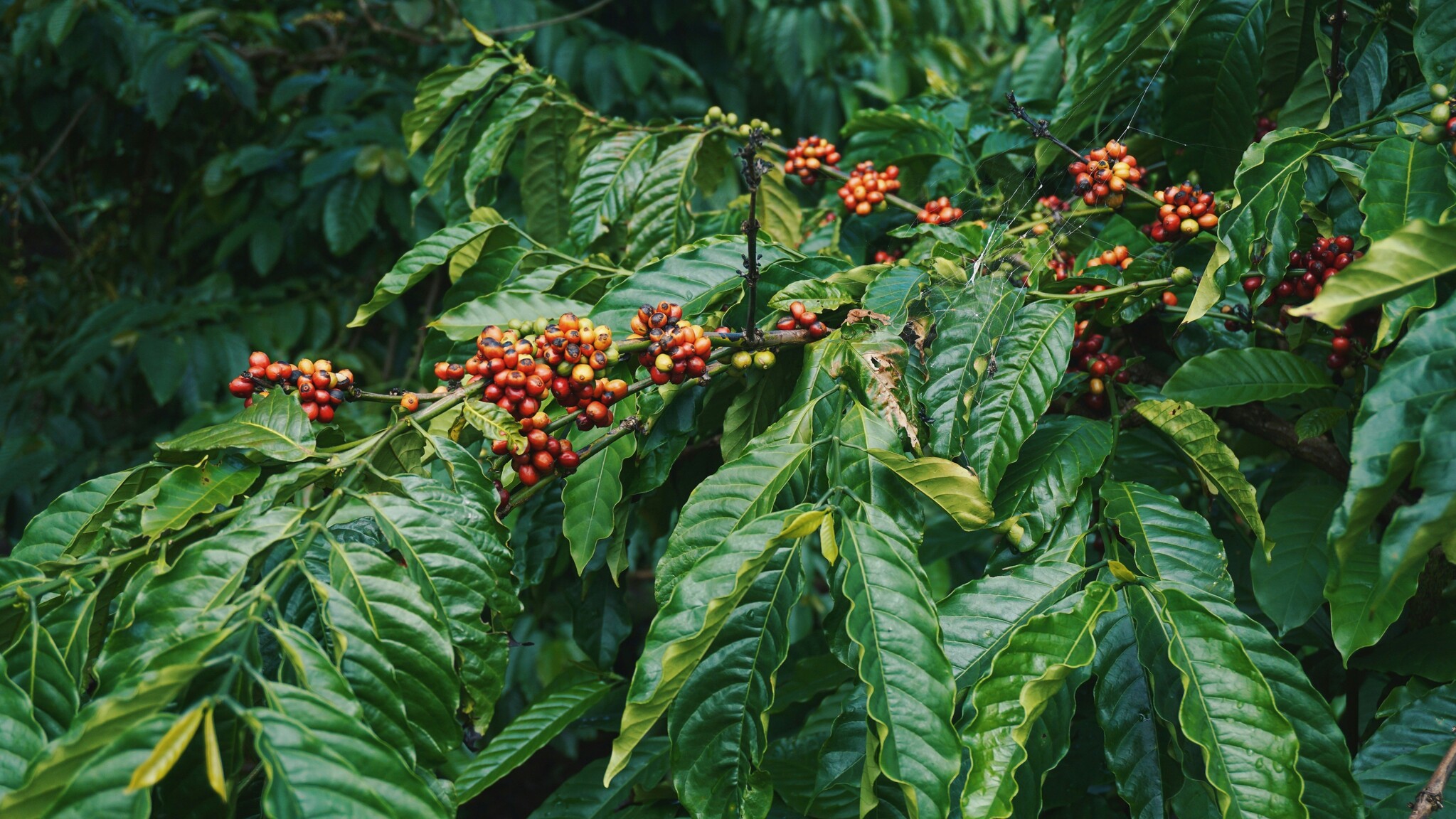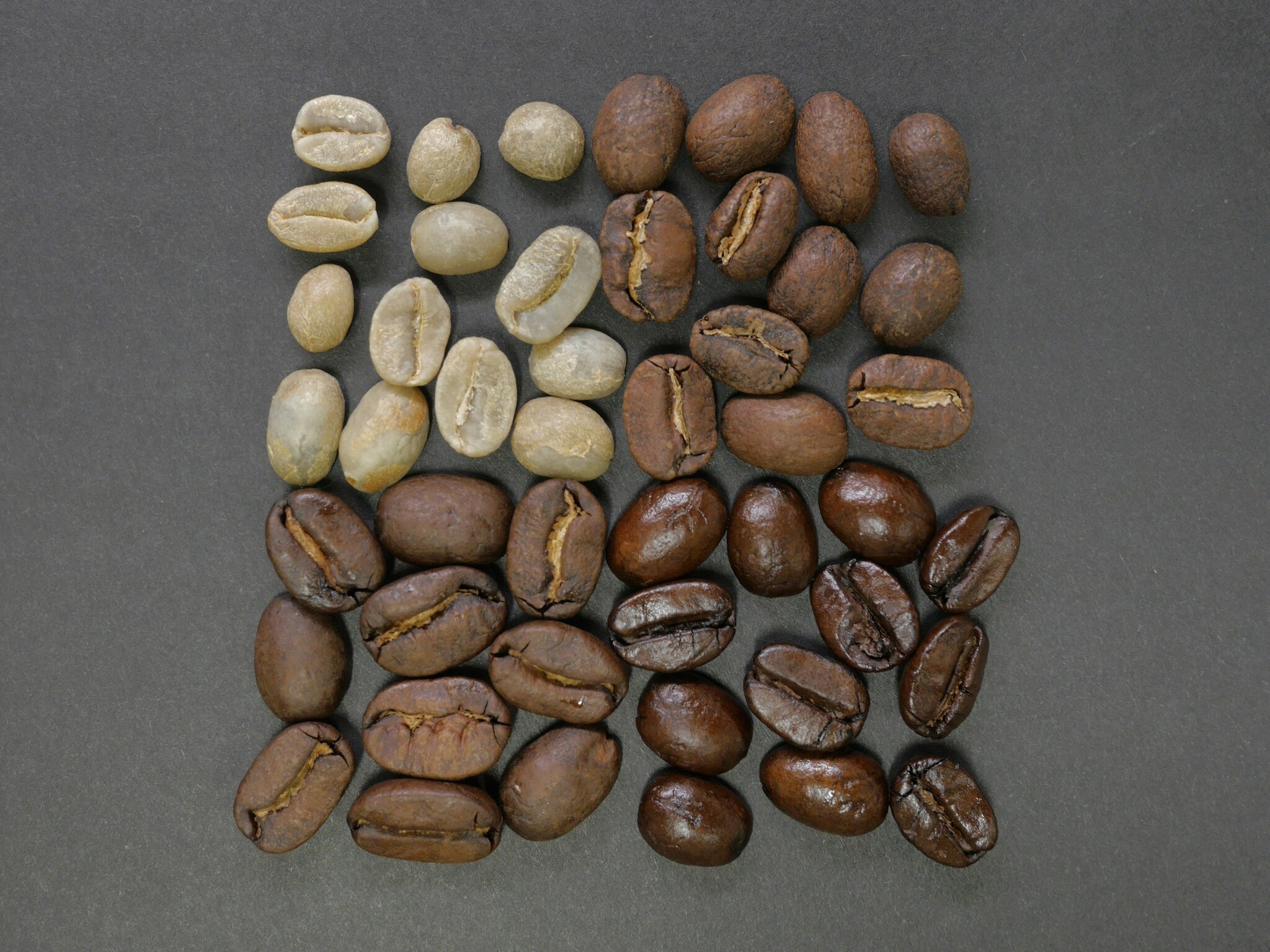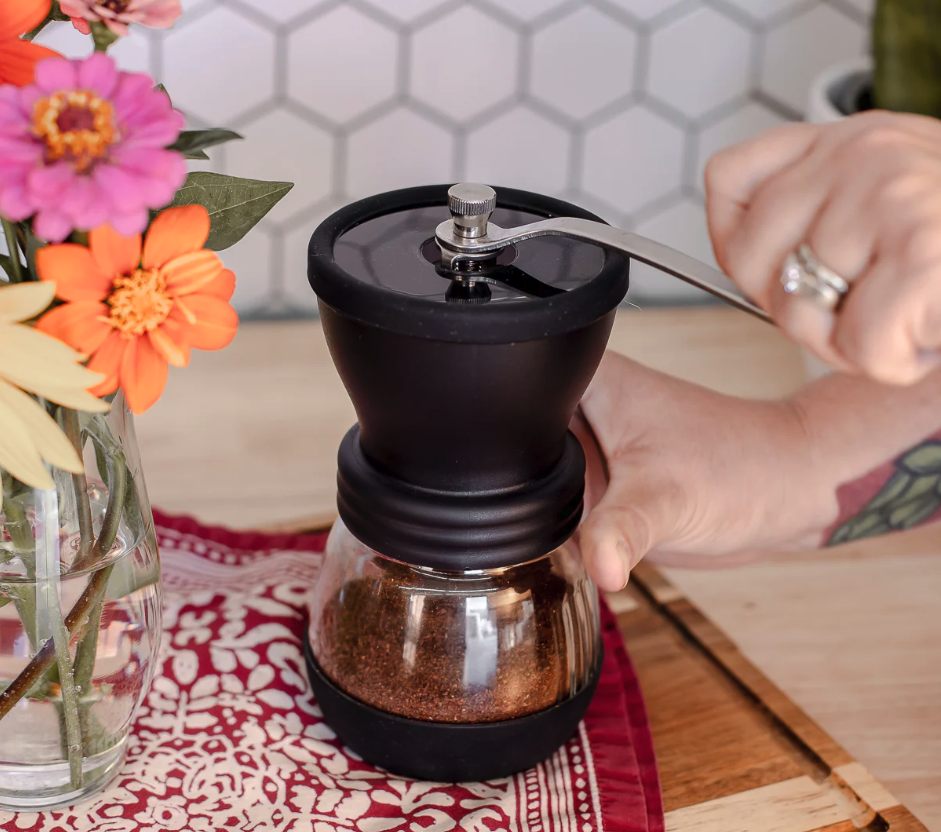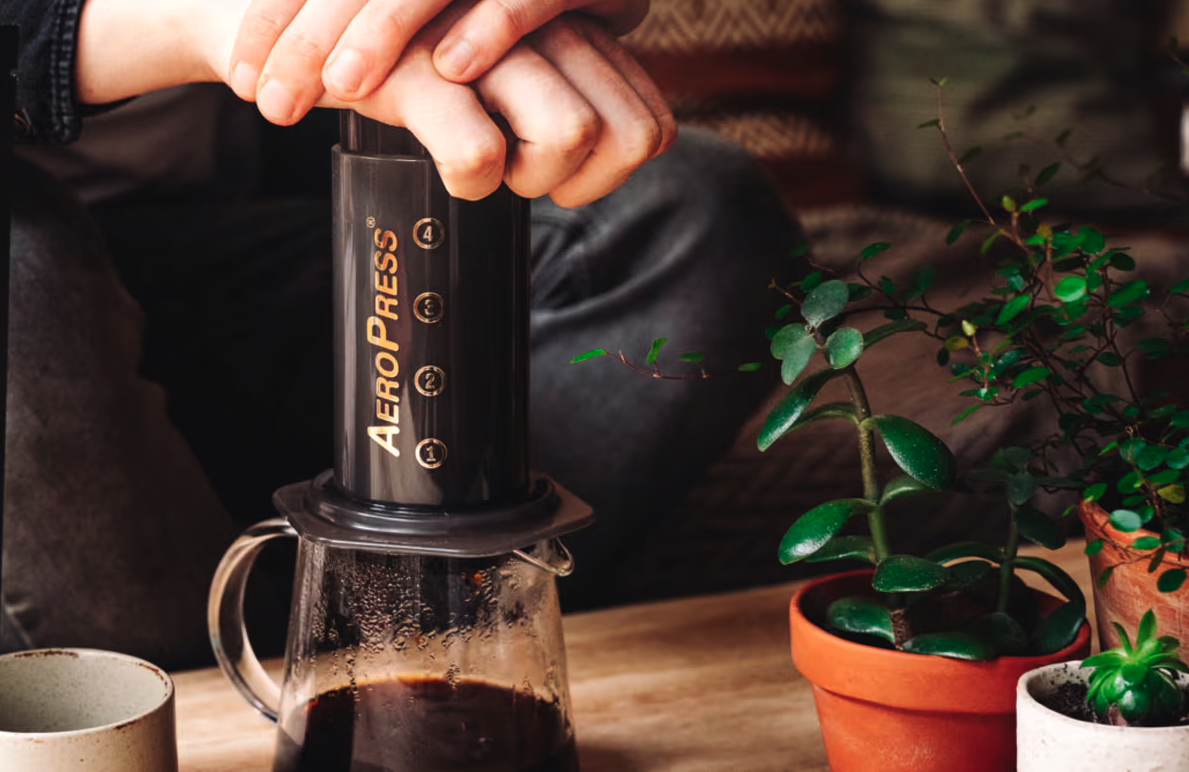Paige Knight - 24 / May / 2024
From Bean to Brewer: Making The Perfect Cup of Coffee
Unleash your inner barista with our coffee 101 blog. We’ll take you through everything from types of coffee beans to how to brew French press coffee.

I used to be an uneducated coffee snob, married to my espresso machine and convinced that it was the elite way to brew coffee. It wasn’t until I learned about other brewers that I realized I was missing out on the fun side of brewing coffee. The truth is, choosing your brewing method is like choosing a kitchen knife. Whether you make your coffee in a French press, an expensive espresso machine, or a cheap drip coffee maker, the perfect cup is the one that fits your unique tastes.
Now, I love to experiment with different flavors, roasts, and grinds, and I learn something new about my preferences every day. If you’re reading this blog, you’re probably like me; you want to learn about coffee, but you’re not sure where to start. From one novice to another, let’s talk about what I’ve learned about the history of coffee, the wide world of roasts, and how to use different brewers to create the perfect cup.
What is Coffee?
Every day, 400 million cups of coffee are brewed and consumed in the United States, making it the second most popular beverage in the nation (aside from water). Similar to tea, coffee has been grown and cultivated for centuries, with its trade beginning in the 15th century Arabian Peninsula. By the 16th century, coffee trade spread to Persia, Syria, Egypt, and Turkey, and the expansion never stopped. Now, coffee is consumed all throughout the world, energizing peoples’ mornings and connecting them to their communities via cafes and coffee shops.

The average Coffea plant produces about 10 pounds of coffee cherries per year.
Coffee is grown in an area called The Coffee Belt, between latitudes of 25°N and 30°S of the equator. Regions within The Coffee Belt, spanning through parts of South America, North America, Africa, Asia, and Oceania, have rich soil, mild temperatures, and frequent rain. These conditions support the growth of Coffea plants, which produce fruits called coffee cherries.
Types of Coffee Roasts
What we think of as “coffee beans” are actually seeds found inside of coffee cherries, which are roasted into the familiar, brown beans we know and love. The longer a bean is heated, the more of its original flavors, acidity, and caffeine roasts out. On the flip side, the roasting process pulls oils to a bean’s surface, so darker roast beans have a higher oil content. Roast level affects several aspects of a coffee bean, including:
| Roast Level | Light Roast Coffee | Medium Roast Coffee | Dark Roast Coffee |
| Flavor Profile | Floral, fruity, sweet, and tangy | Sweet, chocolatey, and smooth | Rich, smoky, and bold |
| Acidity | High | Medium | Low |
| Caffeine Level | High | Medium | Low |
| Oil Content | Low | Medium | High |
Light Roast Coffee
Light roast coffee is roasted for the shortest amount of time, reaching temperatures of just 350°F to 410°F and achieving a light brown color. Because they’re roasted to lower temperatures, light roast coffee beans retain more of their original fruity and floral flavor profile and acidity level. Likewise, they hang on to their caffeine content, making light roast coffee beans the most caffeinated of the roasts we’ll talk about today. Because the roasting process is so short for these beans, there isn’t much time for oils to come to the surface of the bean, making light roast coffee the least oily.

Contrary to popular belief, light roast coffee has far more caffeine than dark roast coffee.
Medium Roast Coffee
Medium roast coffee is roasted to temperatures between 410°F and 440°F, giving them a brown color and thicker body. As these beans are roasted to higher temperatures, they start to lose some of the bright, floral flavors and acidity that light roasts are known for. With a low-level oil content and medium caffeine level, this is a good middle ground between light and dark roast coffee.
Dark Roast Coffee
Dark roast coffee beans are roasted to temperatures 440°F and up, leaving them with a dark brown color. After being roasted at high temperatures, dark roast coffee beans lose most of their original taste and acidity, which is replaced with a bold, smoky flavor profile. During the roasting process, caffeine is burned out and oils are drawn to the surface, leaving dark roast beans with an oily sheen and lower caffeine content.
Coffee Brewers
Coffee brewers come in all shapes and sizes, each with their own unique flavors, brewing methods, accessories, and specifications. There are many that like to laud one brewer over another, but you can make great coffee with just about any brewer. It all comes down to your lifestyle, budget, and flavor preferences.
Brewing Tips
We’re going to talk through the different types of brewers and how to use them, but let’s cover the basics first. Here are some simple tips for brewing coffee in any brewer:
- Don’t overheat your water: There’s this common misconception that you have to brew coffee in boiling water, but that’s just not true. Brewing in boiling water can cause your coffee to burn, throwing off the delicate flavors. Instead, you should bring your water to a boil and let it sit for a minute or so to cool.
- Use freshly ground beans: While some like the convenience of pre-ground coffee, you’ll have more control and brew the best-tasting coffee when you grind your beans yourself.
- Play with ratios: With most of these brewers, your ratio of coffee to water will affect the taste of your cup. Baristas recommend a “golden ratio” of 1 gram of coffee for every 17 grams of water, which can be a good place to start. But don’t feel afraid to play with the golden ratio and find ones that work best for you.

Hand grinders are an inexpensive alternative to electric grinders.
Pour-Over Coffee Brewers
Pour-over brewers are great for those who like to experiment and have a little time and patience. These brewers pull the subtle flavors out of coffee beans, creating delicate, lighter-bodied brews. They’re a good fit for experimenting with lighter roast coffees that still have most of their original flavors.
They come in two varieties: manual and large format. Manual brewers can brew one to two cups at a time, while large brewers can brew enough for groups. The mechanics of the two are largely the same: just place a filter cone over a carafe or mug, fill it with ground coffee, and pour hot water on top. Let’s walk through the nitty gritty of making the perfect cup of pour-over coffee.
Brewing the Perfect Cup of Pour-Over Coffee
- Fill a gooseneck kettle with filtered water and bring it to a gentle boil. You should fill the kettle with a bit of extra water to wet your filter (more on that later).
- While your water heats, use a food scale and a coffee scoop to weigh out your desired amount of coffee beans.
- Use a burr grinder to grind your coffee beans. Shoot for a medium-fine grind when using a manual brewer and a medium-coarse grind for a larger brewer.
- Once your water has heated, place a filter into your pour-over dripper, hold your dripper over the sink, and pour some of your hot water over the filter in a circular motion until it’s completely wet.
- Place your dripper on top of a coffee mug or carafe, add your ground coffee beans into the wetted filter, and place your whole set up on top of your food scale, set to grams.
- Starting in the center and working your way out to just below the rim, slowly pour 50 grams of water into your beans. Wait 30 seconds to allow the beans to bloom.
- Pour 100 grams of water in a circular motion. Wait another 30 seconds.
- Pour 120 grams of water in a circular motion and wait another 30 seconds before pouring the remaining 155 grams of water.
- Wait 2 ½ to 4 minutes before removing the filter.
- (Optional) Serve with frothed milk, spices, and sweeteners to taste.

Le Creuset’sStoneware French Press is perfect for brewing French press coffee in style.
French Press Coffee Brewers
A French press is a manual coffee brewer that works by soaking coarsely ground coffee directly in hot water before using a plunger to separate the grounds from the brewed coffee. Like pour-overs, French presses take a bit more time and patience, but the investment is worth it. Because the coffee soaks directly in the water, the result is a creamy, rich, and full-bodied coffee.
Brewing the Perfect Cup of French Press Coffee
- Boil some water and pour it into your empty French press. This will allow it to warm while you prepare the rest of your materials.
- Refill your kettle with water and bring that to a boil.
- Meanwhile, use a food scale and a coffee scoop to measure out your desired amount of coffee and use a burr grinder to coarsely grind your beans.
- Once your water has come to a boil, remove it from the heat and allow it to sit for 1 minute.
- Meanwhile, pour the hot water out of your French press and add your ground coffee to the bottom.
- Pour half of your hot water into your French press, put the top on, and let it sit for 1 minute.
- Afterward, gently stir with a wooden spoon and pour the remaining hot water into your French press.
- Put the top on and let it sit for another 3 minutes.
- After 3 minutes, slowly push the plunger down to press the coffee grounds to the bottom of the pot. (Note: if it’s difficult to press the plunger, you may have ground your coffee too fine. If it’s too easy, you may have ground your coffee too coarsely).
- Pour the brewed coffee immediately into a coffee mug or carafe.
- (Optional) Serve with frothed milk, spices, and sweeteners to taste.

Moka pots are a staple in Italian households and are perfect for making a cup of strong coffee on abudget.
Moka Pot Coffee Brewers
Invented in Italy in the 1930s, moka pots are innovative stovetop brewers that make strong, concentrated coffee without the cost of an expensive espresso machine. These work by heating water in a lower chamber, which produces vapor pressure and pushes the water up and through a middle filter containing ground coffee. This brews into liquid coffee in an upper chamber. Named after Mocha, Yemen, a region known for its excellent coffee, moka pots produce full-bodied coffee that is great for espresso lovers without an espresso machine budget.
Making the Perfect Cup of Moka Pot Coffee
- Unscrew the top and bottom chambers and fill the base chamber with cold water up to the valve.
- Use a food scale and coffee scoop to measure out your desired amount of coffee and use a burr grinder to grind it to a medium-fine consistency.
- Insert the filter on top of the base chamber and fill it completely with your ground coffee. Be sure not to grind your coffee too fine, and don’t pack it down.
- Ensure that the filter and rubber gasket are in place on the bottom of the upper chamber before screwing it tightly onto the base chamber.
- Place the moka pot on your smallest stove top burner set to medium-low heat.
- As soon as the coffee starts to bubble, remove it from the heat to avoid overheating.
- Once the coffee is finished brewing, mix it with a spoon before pouring it into coffee mugs.
- (Optional) Serve with frothed milk, spices, and sweeteners to taste.

The AeroPress brews fast and easy coffee with a compact design that can easily be taken on the go.
AeroPress Coffee Brewers
Created by engineer and physicist Alan Adler, the AeroPress is a simple and innovative gadget that makes really good coffee without all the fussiness of other brewers. In 2005, Adler wanted to make a fast, simple, on-the-go cup of quality coffee, and thus the AeroPress was born. It doesn’t require a burr grinder, is light and durable, and produces crisp and distinct flavors. This is an especially good option for people who travel or live an active lifestyle.
Making the Perfect Cup of AeroPress Coffee
- Use a kettle to bring your water to a boil, then let it cool for 1 minute.
- Meanwhile, measure out 2 full AeroPress scoops of coffee beans and grind until medium-fine (you can also use pre-ground coffee).
- Place a paper filter inside the AeroPress cap and place the AeroPress on top of a coffee mug.
- Place the included funnel on top of the AeroPress and pour your ground coffee in. Remove the funnel when you’re finished.
- Pour water to the top line on the AeroPress, and use the paddle stirrer to stir once.
- Insert the plunger and firmly press down until you hear a long hiss.
- Taste your coffee and, if needed, add more water to dilute it.
- (Optional) Serve with frothed milk, spices, and sweeteners to taste.

Coffee accessories, like Coffee Art Stencils, Steaming Pitchers, and Powdered Sugar Spoons, allow you to play with coffee art so you can brew like a cafe.
Brewing With Blackstone’s
Blackstone’s of Beacon Hill is more than New England’s biggest walk-in knife retailer and sharpener. Lots of in-store customers are too transfixed by our home decor, gifts, and famous knife wall to notice the back room in our shop, lovingly dubbed “Kitchen Heaven.” Kitchen Heaven houses everything from cooking gadgets to dish towels, with a whole section dedicated to coffee and tea. Stop by our Beacon Hill location to chat with our staff about the different brewers we offer or check out our website to shop online or read our blog.










